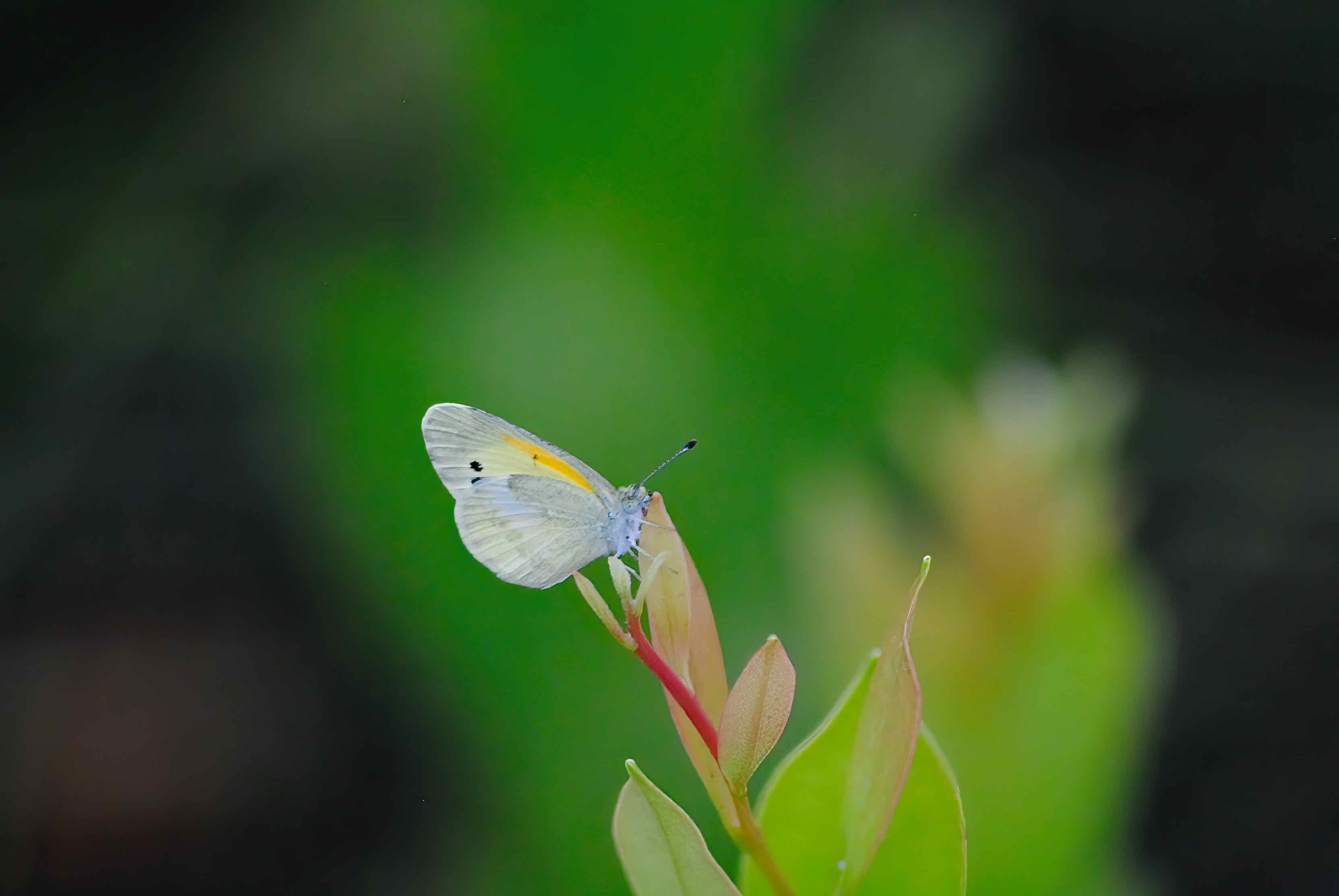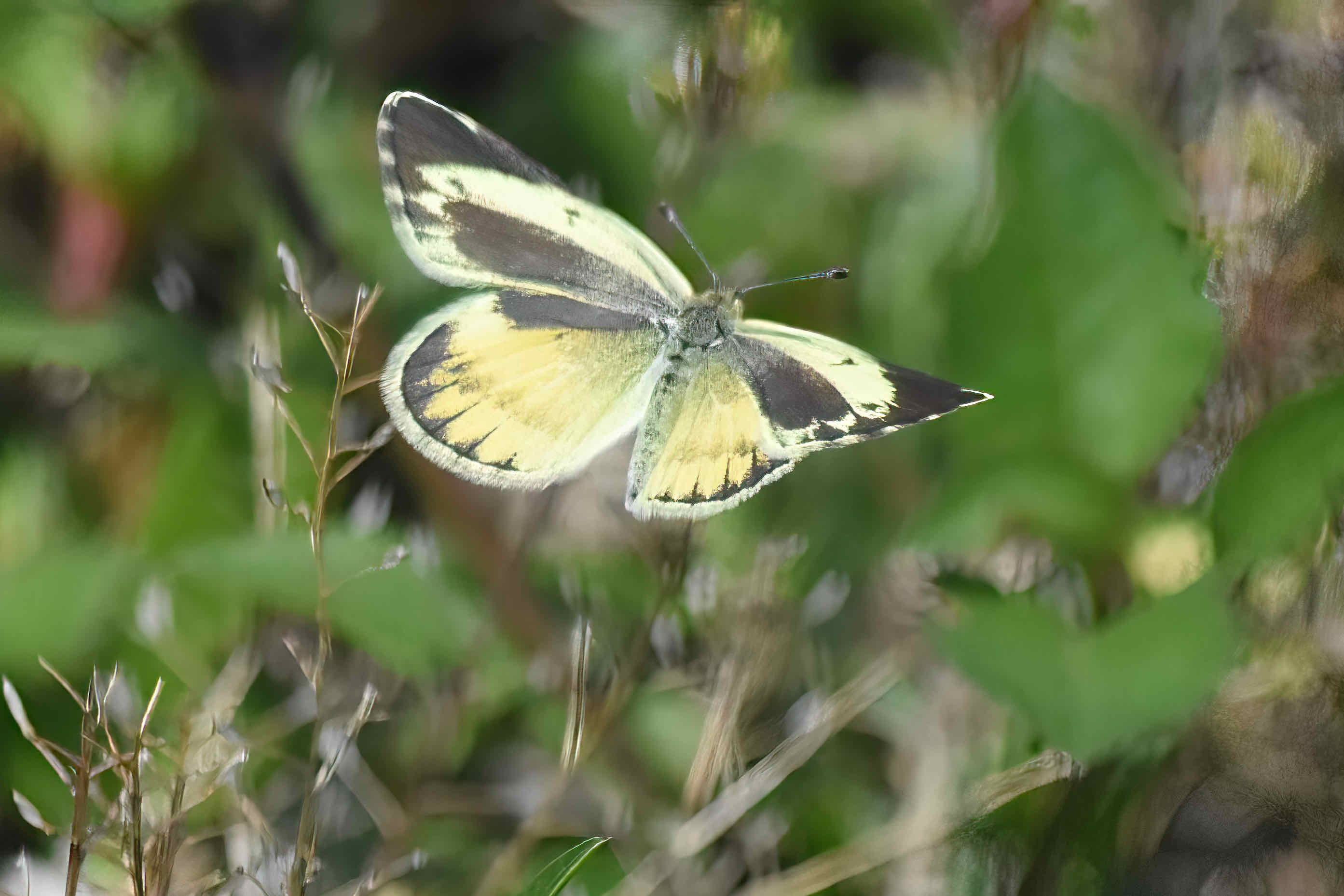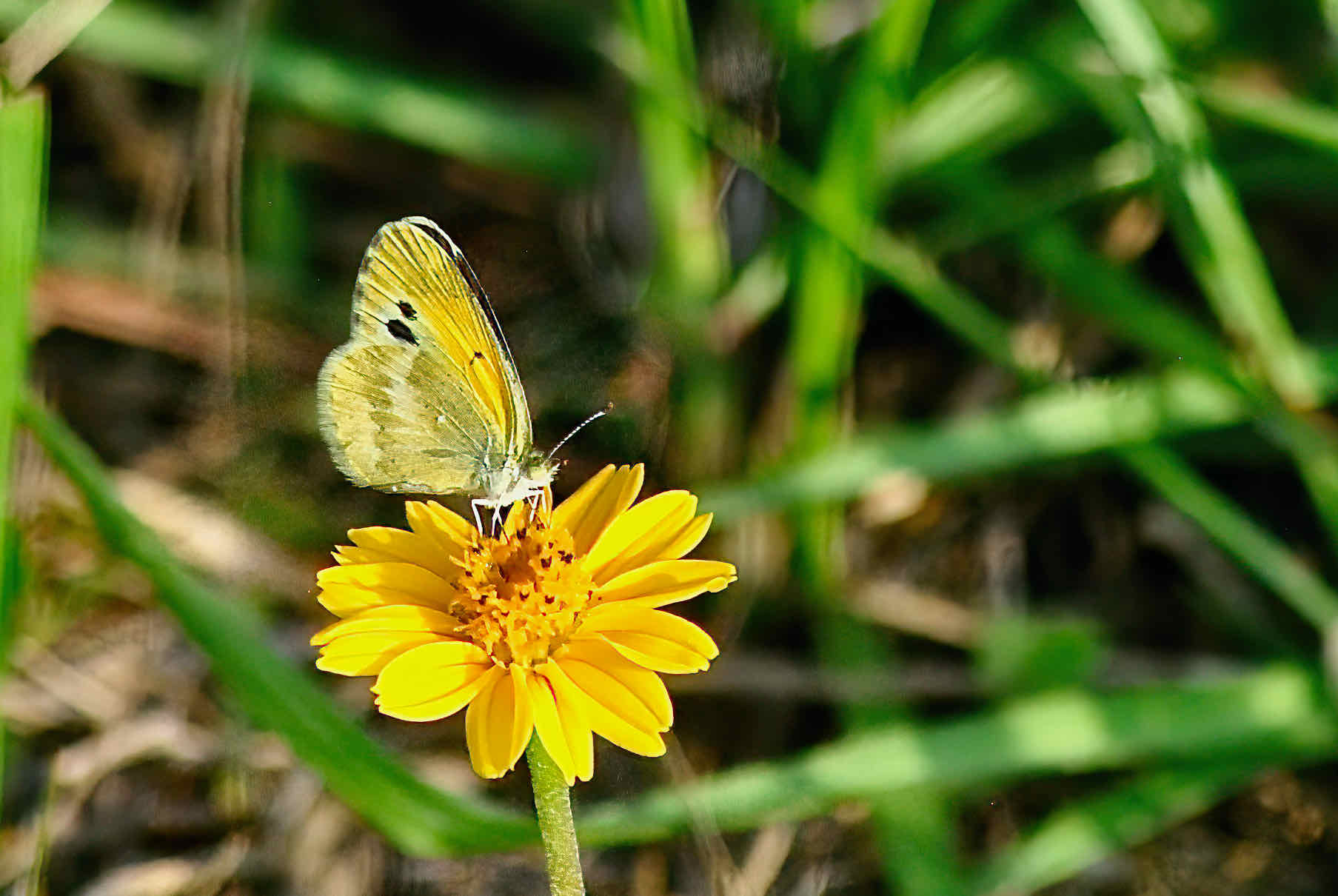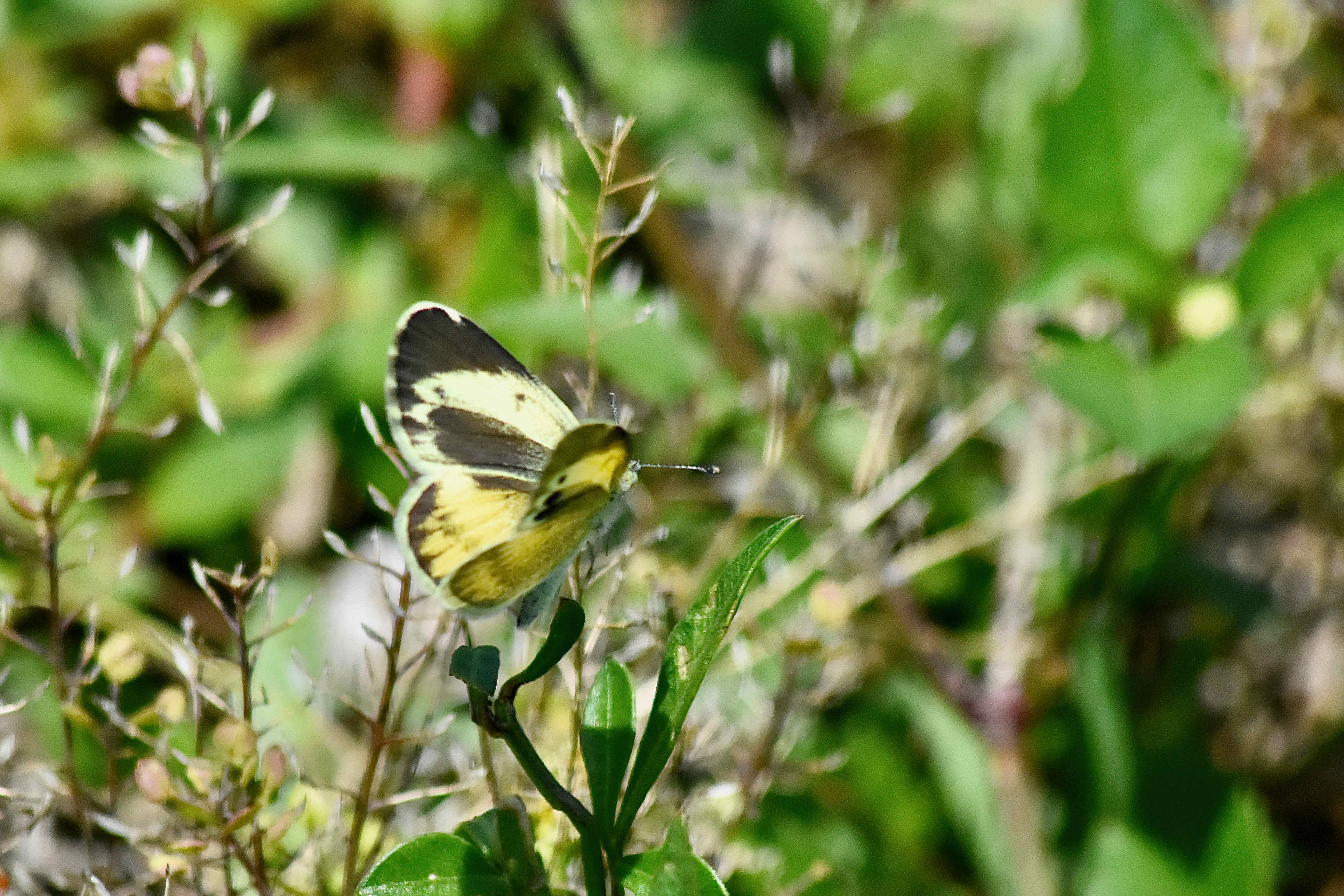
Dainty sulphur, photographed at Pondhawk Natural Area, Boca Raton, Palm Beach County, in May 2014.
Dainty sulphur, Nathalis iole, earns the name. It is tiny, with a wingspan of an inch or less. It's commonly found flying just inches above the ground in search of its favorite plants, members of the aster family.
Look along the side of a road or along a grassy median strip when you're stopped in traffic and you may see two or three or more of them going about their business. They do flutter about a lot, which makes photographing them a bit of a chore, but they will rest with their wings folded, perpendicular to the sun in order to collect heat.
Dainty sulphurs are found throughout Florida and in most of the southern tier of the United States as far west as Southern California. Dainty sulphur also make their way to more colder climes, as far north as Minnesota, even crossing the border into Manitoba, and eastward to Pennsylvania. Despite their small size, they've been found at altitudes over 13,000 feet.
Cold weather does limit them, however. They will produce two or three generations per season up north but will die out come winter. They will migrate back when warmer weather returns in spring. In South Florida and South Texas, they're active year round. Also part of their range: the Caribbean, Mexico, Central America as far south as Guatemala. Some sources extend the range to South America .
Dainty sulphurs tend to like dry, open areas, including meadows, grasslands, fallow fields and roadsides. They are mostly yellow, with a salt and pepper look blended in. The forewings are elongated, with a promient yellow-orange stripe near the base of the wing, with blackspots along the outer edge. Females feature more black than males; dainty sulphurs also can vary in shade according to the season. There is also a white form, but it is rare.
Host plants for the dainty sulphur can vary according to the region, but they're always members of Asteraceae, the sunflower family. In Florida, the list includes Spanish needles (also known as shepherd's needles) and carpetweed.
Males patrol low to the ground looking for receptive females; fertilzed females then lay eggs singly, usually on the upper side of the leaves of the host. The larvae, or caterpillars, are green with a purple stripe along the back and a pale stripe along the side.
The young sulphurs to be dine at nite on the leaves and flowers of the host, and unlike some butterfly larvae, they don't build shelters. They'll grow through four "instar" stages and into a pupae (cocoon stage) in about 23 days, and emerge from their cocoon 15 days later. All told, they'll go from egg to adult in about 38 days after hatching.
The list of nectar plants for adults also includes Spanish needles and other members of Asteraceae, plus begger ticks, verbena, coreopsis and even mud.
The dainty sulphur butterfly is also commonly known as little yellow butterfly and the dwarf yellow butterfly. It is a member of Pieridae, the family of white butterflies and yellow butterflies. It is the smallest sulphur native to North America.



